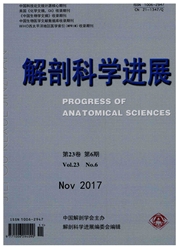

 中文摘要:
中文摘要:
目的通过建立异时或同时连体模型,探讨年轻血液对衰老相关认知功能障碍的改善。方法用C57BL/6小鼠、EGFP转基因小鼠建立EGFP-C57BLJ6异时或同时连体模型。通过脾脏细胞分离和荧光显微镜技术检测连体模型血液嵌合情况。通过场景恐惧实验和新物体识别实验检测连体模型组中的年老C57BL/6小鼠的学习记忆能力。结果 EGFP-C57BL/6连体模型形成稳定的血液嵌合。场景恐惧实验的关联测试中,异时连体模型组中的年老C57BL/6小鼠的学习记忆能力得到显著改善(P〈0.05)。新物体识别实验中,异时连体模型组中的年老鼠对新物体的辨别能力和短期及长期记忆能力明显增强(P〈0.05)。结论年轻血液可显著提高年老鼠的学习和记忆能力,改善衰老相关认知功能障碍。
 英文摘要:
英文摘要:
Objective To investigate the improving effects of young blood on aging-related cognitive disorder through the establishment of heterochronic parabiosis models. Methods EGFP-C57BL/6 heterochronic or isochronic parabiosis models were established using C57BL/6 mice and EGFP transgenic mice. The blood chimerism of parabiosis model was analyzed by the isolation of spleen cells and subsequent fluorescence microscopy. The learning and memory of the old C57BL/6 mice in parabiosis model groups was evaluated by contextual fear conditioning test and novel object recognition test. Results Stable blood chimerism was established successfully in parabiosis models. In contextual memory testing of the contextual fear conditioning test, the learning and memory abilities of the old C57BL/6 mice in heterochronic parabiosis model group were obviously improved (p〈0.05). In the novel object recognition test, the capacity of recognizing novel object and short-term and long-term memory of the old C57BL/6 mice in heterochronic parabiosis model group were significantly enhanced (p〈0.05). Conclusion Young blood can evidently improve the learning and memory of the old mice and ameliorate aging-related cognitive disorders.
 同期刊论文项目
同期刊论文项目
 同项目期刊论文
同项目期刊论文
 期刊信息
期刊信息
